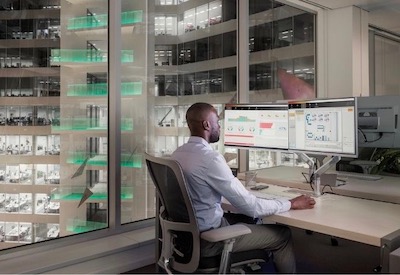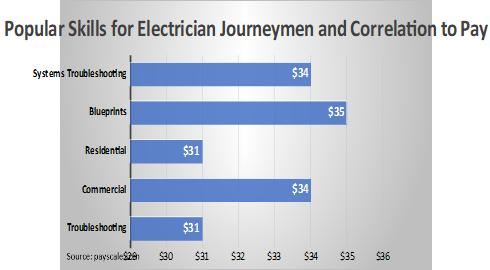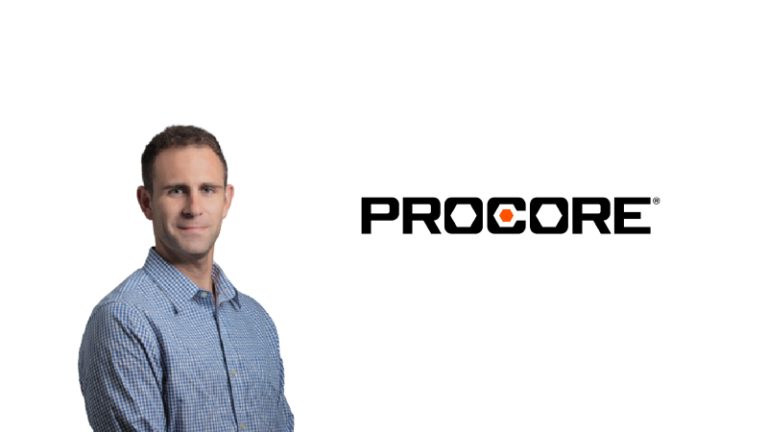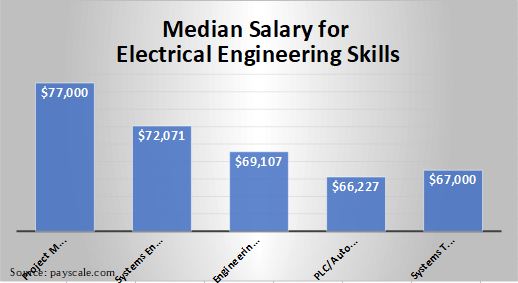A Safer Workplace with Smart Lighting

Mar 1, 2021
By Martin Garner
The Internet of Things (IoT) can help create safer workspaces, and connected lighting systems are uniquely well-placed to form the basis of an IoT infrastructure.
As the world starts to emerge from the COVID-19 pandemic, building owners, building managers, and office managers all have the urgent task of ensuring that workplaces offer employees a safety net from the virus. It’s not only important to make workspaces safe, but also to make people feel safe.
In other words, people returning to the workplace need to feel comfortable about all aspects of the building, so it’s useful to give them control over some areas that could raise concerns and which they couldn’t affect before the pandemic.
For example, employees may want to avoid touching surfaces like door locks, elevator controls or light switches, sidestep crowded areas to get to their desk, and find an available hot desk without having to walk through occupied parts of the office.
Creating a new safe space
Looking beyond the needs of individual employees, many building owners and office managers will be reassessing how their space is used and whether it’s laid out in the most appropriate way, given the changes in office usage brought on by the pandemic and the likelihood of more social distancing measures. With uncertainty over future rules and regulations, building managers have become much more aware of the need for remote monitoring and predictive maintenance for building systems.
All these concerns point toward increased adoption of smart building systems. We hear from some suppliers, especially mobile network operators, that the smart buildings segment now accounts for as much as 80% of demand for their Internet of Things (IoT) solutions. But the various needs of users can quickly make it hard to work out the necessary mix of systems.
For example, building management systems provide equipment monitoring and control services for the building owner or manager, but normally don’t serve the needs of the office manager or users. Other remote monitoring systems for machinery, such as elevators and heating, ventilation and air conditioning (HVAC), are set up and run by the manufacturers of those systems.
Other systems serve different aims and user groups. Systems to monitor footfall, desk usage and space management tend to be in place for a short while as part of a study and are then removed.
Indoor location systems can track movement of people and assets around a space. Keyless access systems allow entry without touching keypads or locks. Camera-based systems can monitor public areas to identify people with a high temperature, or those assembling in groups and not complying with social distancing rules. And smart lighting systems provide apps for users, as well as data for building and office managers.
A system that can work for all
Navigating through this mix is a challenging task for staff, who normally haven’t been trained on the technologies and struggle to work out how the different systems could link together to provide the necessary information in the right form to the right people.
With these issues in mind, it’s very interesting to see the rise of a relatively new set of capabilities in the smart buildings area, namely smart LED lighting that serves as an infrastructure for several types of IoT sensors that can collect data from the environment they’re in.
Upgrading an office with smart lighting involves LED luminaires connected by Power over Ethernet or wirelessly, software-based control, and a platform for storing and analyzing collected data. It enables many new data-enabled services.
Crucially, the business case for other IoT applications improves dramatically if they can run on the same network. This is because it’s easier to install sensors for other uses on a lighting network than to install a separate system for them with its own cabling.
The benefits of connect lighting
Signify’s Interact Office is an interesting example of using connected lighting as infrastructure. It adds a sensor unit into luminaires to monitor temperature, humidity, light levels and noise levels, as well as to track occupancy and numbers of people. It also provides a Bluetooth Low Energy beacon. The data generated are collected in the Interact Office platform, which offers
• smart lighting functions including lighting management, asset management, energy optimization and scene management
• a space management app for building and office managers to provide data on how areas of an office are used, and to enable additional use cases like appropriate cleaning regimes to be set
• a workspace app that allows users to adjust the lighting in their area, check crowd density so they can decide whether it’s safe to go to communal spaces, reserve a hot desk, and navigate the office avoiding more crowded areas
• API to enable data integration from the platform with other systems in the building
One of the benefits of using lighting as an infrastructure for sensor networks is that all workplaces already have lighting installed. This makes it relatively easy to upgrade the system, with the main tasks being to change the luminaires and to run an Ethernet cable to them or enable a wireless connection to them. The cabling is typically easier with lighting than for devices that need to be installed separately.
Another important advantage is that office tenants could set up smart lighting themselves, without having to wait for the building manager or landlord to complete an upgrade for the whole building. Additionally, most types of workplace can potentially be addressed, including offices, factories, warehouses, retail outlets, schools, farm buildings, casinos, museums and more.
A final important factor is that there are now many commercial spaces available to let, as companies rethink their use of offices considering COVID-19. So, owners and building managers need to set their property apart to make it more attractive to rent. Smart building features will be an important part of that.
Smart LED lighting has huge potential as an infrastructure for all kinds of IoT sensors in offices and other workplaces. A connected lighting system can serve the owners and managers of the building, as well as the tenants and employees.
Some of the main applications hold the promise of a safe return to work post-pandemic, some help to boost resilience for dealing with possible disease outbreaks in the future, and others are about managing buildings in a more efficient and sustainable way.
Thanks to their ubiquity and easy access, lighting systems are uniquely well-placed for this role in an IoT infrastructure. Connected lighting should be firmly on the list as a candidate in any smart building upgrade project as the world tries to return to normal ways of working.
Martin Garner is COO and Head of IoT Research, CCS Insight. This article was first published online by Signify; www.signify.com/global/our-company/blog/innovation/safer-workplace-with-smart-lighting.
















